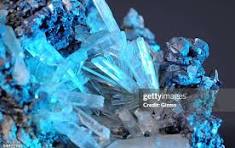
By Newswriters News Desk
What began as a race to net-zero has morphed into a full-blown “green energy war,” with the United States, China, and Europe now openly clashing over control of the minerals, factories, and patents that power the energy transition.
This week, the European Union imposed 100–200% tariffs on Chinese electric vehicles and lithium-ion batteries, accusing Beijing of flooding markets with state-subsidized products. Hours later, China restricted exports of gallium, germanium, and refined graphite—three elements essential for solar panels, wind turbines, and semiconductors—citing “national security.” Washington responded by expanding its Entity List, cutting another 40 Chinese battery and rare-earth firms from U.S. technology.
Industry analysts warn the fallout is already crippling supply chains. Battery-grade lithium prices have spiked 42% in three weeks, while European automakers report delays of up to 18 months for new EV production lines. Meanwhile, Congo—source of 75% of the world’s cobalt—announced it will route all future contracts through Chinese state firms, effectively freezing Western miners out.
At stake is more than trade: whoever controls the green stack (from African mines to Asian refineries to American software) will dictate energy prices and geopolitical leverage for decades. U.S. officials now privately call it “the new OPEC, but with batteries instead of oil.”
Developing nations are picking sides fast. Indonesia banned raw nickel exports to force Western investment into local smelters, while Chile nationalized two major lithium operations last month. Renewable energy deployment, once projected to surge 17% annually, is now expected to slow to single digits in 2026 if the mineral chokeholds persist.
As COP30 approaches in Brazil next month, diplomats admit the climate summit may double as a truce negotiation—or the starting gun for an even fiercer resource war.
Acknowledgement:
AI tools were used for background research and editorial refinement. All ideas, analysis, and conclusions in this article are solely those of the research team of newswriters.in



